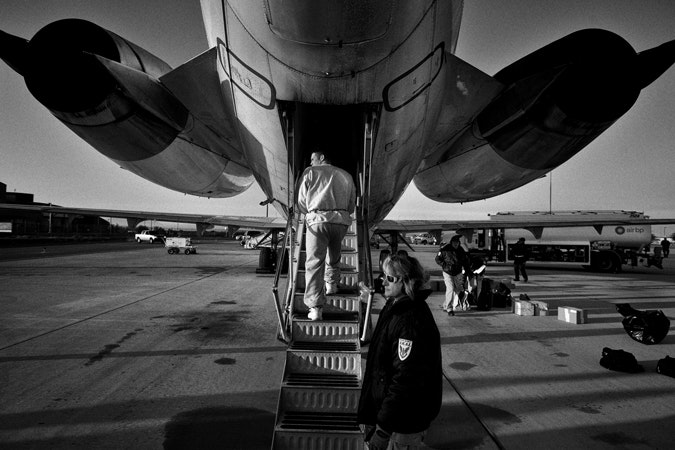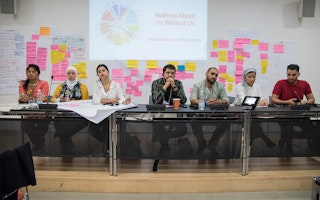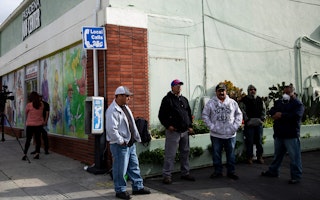
People moved to the United States in the past for the same reasons as today: to join their families, to work, and to seek safety and refuge from war, violence, and natural disasters.
According to figures drawn from the U.S. Census Bureau, there were roughly 45 million immigrants in the United States in 2017, meaning that immigrants make up about 14 percent of the population. Nearly 90 million people—28 percent of the overall U.S. population—are immigrants or their U.S.-born children, according to the 2018 Current Population Survey.
Two-thirds of undocumented immigrants have been living in the United States for more than 10 years and many of them live with their children who are U.S. citizens.
When was the current U.S. immigration system established?
There was never a single, coherent act by the U.S. Congress to create an immigration system. Historically, the United States has had an unfortunate history of enacting restrictive exclusionary laws, such as the Chinese Exclusion Act of 1882, the National Origins Act of 1924, and the Illegal Immigration Reform and Immigrant Responsibility Act of 1996. The system as we know it today is the result of several major legislative reforms:
- The Immigration and Nationality Act of 1965 was a sweeping act that ended the national origins quota system—which disproportionately favored European immigrants—and created the foundation of the current system, under which immigration is based around family reunification and the needs of employers.
- The Refugee Act of 1980 adopted the United Nation’s definition of “refugees” and expanded the annual admission of refugees.
- In 1986, a Democratic Congress approved, and President Reagan signed into law, a major immigration reform bill, which created a path to citizenship for people who entered the United States without permission before 1982. The law also made it illegal for employers to knowingly hire undocumented workers.
- In 1990, President George H.W. Bush signed into law legislation that created the Temporary Protected Status program, which allowed people fleeing violence and natural disasters to legally work and live in the United States until their home country had sufficiently recovered.
- The DREAM Act, designed to offer undocumented youth a path to legal status, was first introduced in Congress in 2001 and has support from members of both political parties. Although it been approved by committees in both the House and Senate, it has yet to become law.
- In 2012, President Obama created the Deferred Action for Childhood Arrivals program, which allowed a specific group of young immigrants without status, who were brought to the United States as children, to apply for work authorization permits and protection from immediate deportation. The Trump administration ended the program in 2017, although the federal courts have kept the program in place.
- Since then, immigration reform has eluded presidents of both parties. Several measures have been introduced, and even passed one chamber with bipartisan support, but they stalled out short of final passage.
What role do immigrants play in the U.S. economy?
According to the National Academy of Sciences, “immigration is integral to the nation’s economic growth.” That is partially because the U.S. workforce is getting older, which makes the arrival of tax-paying, job-creating, and business-starting newcomers an economic necessity. The report also found that there is “little evidence that immigration significantly affects the overall employment levels of native-born workers.”
In fact, IRS data from 2015 shows that the agency received 4.4 million income tax returns from workers without Social Security numbers—who are more likely to be undocumented—which were worth $23.6 billion [PDF].
What’s the difference between a refugee, asylum seeker, migrant, and immigrant?
The terms “asylum seeker,” “immigrant,” “migrant,” and “refugee” are often used interchangeably. The differences between the four, however, are important.
According to the International Rescue Committee:
- Refugees are people living outside of the United States who were “forced to flee [their] home because of war, violence, or persecution, often without warning.”
- Asylum seekers are people who are “seeking international protection from dangers in [their] home country, but whose claim for refugee status hasn’t been determined legally.” People seeking asylum are applying inside the United States. Whether a person is seeking asylum or status as a refugee, they have to meet the same challenging burden of proof. They must demonstrate “a well-founded fear of persecution” on the basis of race, religion, national origin, political opinion, or member of a social group.
- Migrants are people who are “moving from place to place (within [their] country or across borders), usually for economic reasons such as seasonal work.”
- Immigrants are people who have made “a conscious decision to leave his or her home and move to a foreign country with the intention of settling there.”
What motivates asylum seekers to come to the United States?
While some asylum seekers come to the United States because of poverty, research by Doctors Without Borders [PDF], the U.S. Conference of Catholic Bishops, and others has shown that a large—and growing—number of them are trying to escape violence.
In 2010, for example, 13 percent of the people apprehended at the U.S. southern border came from Central America’s so-called Northern Triangle—Guatemala, El Salvador, and Honduras. With violence and crime now at unprecedented levels—they are among the top 10 most violent countries in terms of homicides—that number had jumped to 42 percent in 2016.
According to Pew Research, more Mexicans are leaving the United States rather than entering. Between 2009 and 2014, 1 million Mexicans and their families—including U.S.-born children—left the United States for Mexico.
More recently, there’s been a significant increase in the number of women and children fleeing violence and crime from the Northern Triangle. Between fiscal year 2018 and 2019, there has been a 374 percent increase in the number of families seeking asylum in the United States.
Are refugees vetted before entering the United States?
The process for vetting refugees is long and difficult, typically taking between 18 months and two years to complete. Refugees must register with the United Nations’ High Commissioner for Refugees, which does an initial screening before referring qualifying individuals to the U.S. Department of State. The State Department then conducts background and security checks, fingerprinting, biometric screening, and medical tests. Only after all of these steps have been taken can a person enter the United States.
What are the Open Society Foundations doing to support reforms to immigration policy in the United States?
The Open Society Foundations support organizations and individuals working on immigration policy reform, access to legal services, and culture change. To that end, we work with groups such as:
- The International Rescue Committee, founded in 1933 at the request of Albert Einstein, offers emergency assistance and long-term aid to help refugees become self-sufficient.
- Detention Watch Network is a coalition of 94 members, based in Washington, D.C., which includes formerly detained people and their families, as well as community and faith-based groups, and legal service providers who educate the public, media, and policymakers about the injustices of the U.S. immigration detention and deportation system.
- The Southern Border Communities Coalition, which is made up of regional networks in the four states on the U.S. southern border, coordinates and collaborates on work ensuring that border enforcement policies and practices are accountable and fair, respect human dignity and human rights, and prevent the loss of life in the region. They also promote policies that improve quality of life in border communities and support humane immigration reform policies affecting the border region.
- Welcoming America is an internationally-recognized nongovernmental organization working in over 115 communities across the United States to reduce the barriers to full integration that migrants face and to build bridges between newcomers and long-time residents.
- Church World Service was founded in 1946 in the aftermath of World War II and works to transform communities around the globe through objective and sustainable responses to hunger, poverty, displacement, and disaster.
- Pop Culture Collaborative is a community of philanthropic entities seeking to use the power of culture—podcasts, movies, and advertising—to achieve positive and lasting change for marginalized causes and communities. Pop Culture Collaborative has brought together artists, scientists, pop culture industry insiders, and social justice leaders to use entertainment as a means to shape the way the public sees and understands complex social justice issues.
Read more
Refugee Leadership
Rising from the Ashes of Adversity

A UN advocate for refugee rights is forced by violence to seek refuge herself. How that experience helped build a vibrant global refugee group—and how funders can help refugees overcome barriers to success.
Finding Hope in Diaspora
“Cry, Scream, But Be Strong”: Stories of Afghans in Exile

Afghan Voices of Hope has spent the two years since the Taliban retook control of Kabul capturing the rage, helplessness, and hope of those displaced and struggling to survive as refugees. These are their stories.
A Nation of Immigrants
What the U.S. Still Owes Undocumented Workers

In the United States today, “essential” workers are more likely to be immigrants, and many of them are undocumented. Given all that these people have risked to keep society afloat, they deserve far more support.